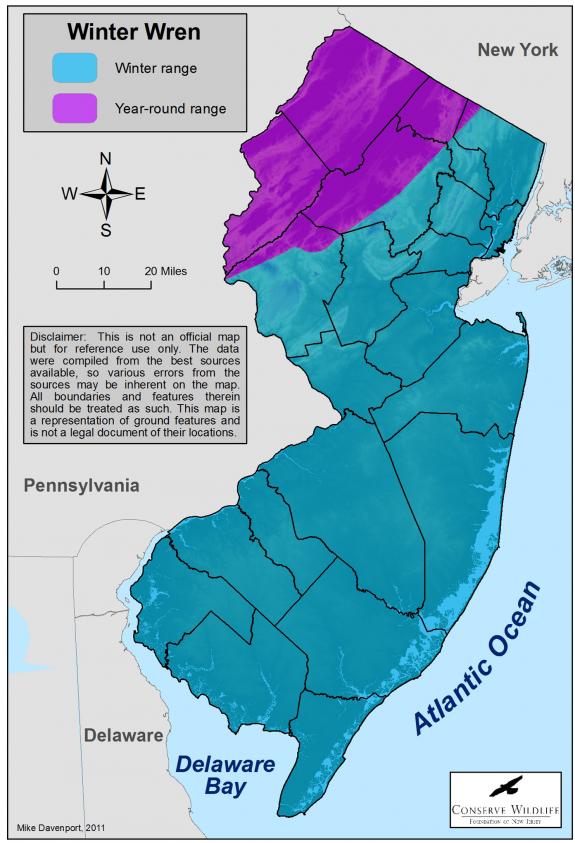Troglodytes hiemalis
Type: bird
Status: special concern
Species Guide
Winter wren
Troglodytes hiemalis
Species Type: bird
Conservation Status: special concern
IDENTIFICATION
The winter wren is a very small dark brown songbird about 4 inches in length. It has a slender, slightly decurved bill, a very stubby tail, a light line over the eye, and a dark heavily barred belly. Often described as mouse-like, this small energetic wren is usually observed near the ground. Both sexes look alike.

Distribution & Habitat
The breeding range of the winter wren extends across southern and central Canada from the Pacific coast to the Atlantic coast. In the U.S., the breeding range includes areas along the Pacific coast, the northern Rocky Mountains, the upper Midwest, New England, and the Mid-Atlantic as far south as northern New Jersey. It winters in the southeastern U.S. and is a year-round resident in some portions of the southern breeding range.
Breeding habitat is cool, thick deciduous or coniferous forest with a dense understory and usually located near water. During the winter, their habitat consists of various types of forests and woodlands with understory, thickets, or brushy fields.
Diet
The winter wren feeds almost entirely on insects and spiders. They usually forage on or near the ground.
Life Cycle
The breeding season for the winter wren in New Jersey is between early April and mid-September. The nest is usually constructed within 10 feet of the ground in a hollow, cavity, or hole on the side of a tree, wall, or steep bank. The nest itself is a domed structure constructed with leaves, moss, and other plant material. The male builds the outside of the nest while the female builds the inside, lining it with feathers.
Between 5 to 8 eggs are laid. Incubation is by the female alone and lasts between 14 to 17 days. The young are tended to by both parents and will leave the nest at 15 to 20 days old. The male is often polygamous and will build a number of nests within his territory for multiple females. His various nests’ eggs will hatch at intervals so that he can care for one set of nestlings at a time.
Current Threats, Status, and Conservation
The winter wren is considered to be relatively common throughout much of its range. However, due to its small size and reclusive nature, it often goes under-reported. It is possible that this species has undergone population declines in some areas due to habitat loss and forest fragmentation. The winter wren is listed as a Species of Special Concern in New Jersey (not yet endangered or threatened but possibly on its way). The winter wren prefers old-growth forest during the breeding season so preservation of large areas of intact old-growth habitat benefits their population within the state.
References
Text written by Michael J. Davenport in 2011.
Scientific Classification
- Kingdom: Animalia
- Phylum: Chordata
- Class: Aves
- Order: Passeriformes
- Family: Troglodytidae
- Genus: Troglodytes
- Species: T. hiemalis